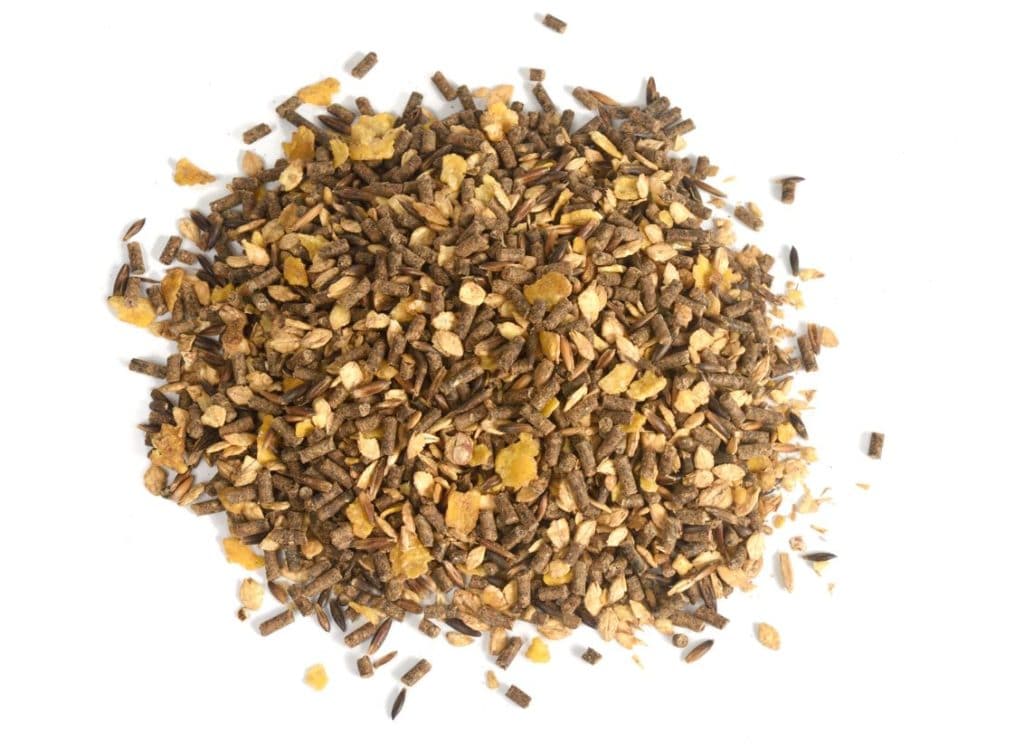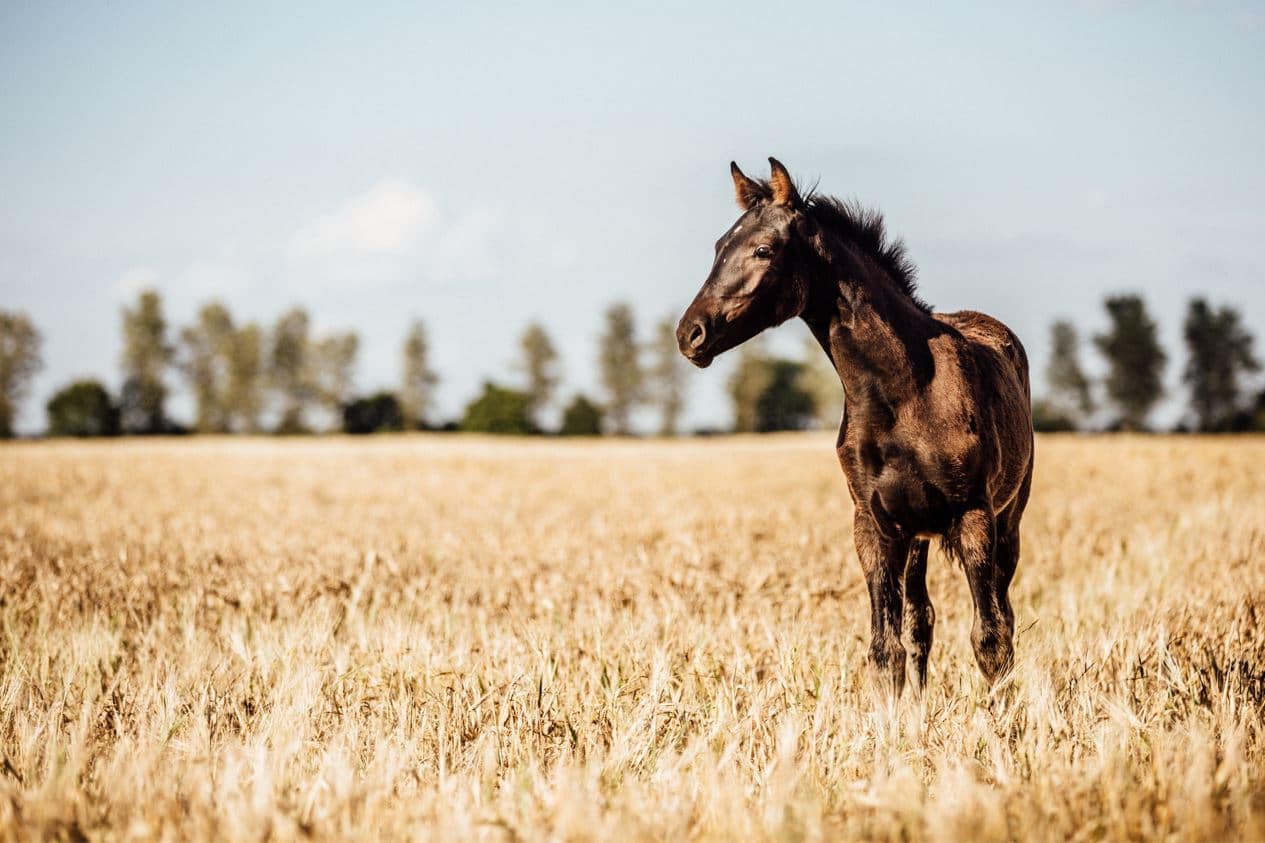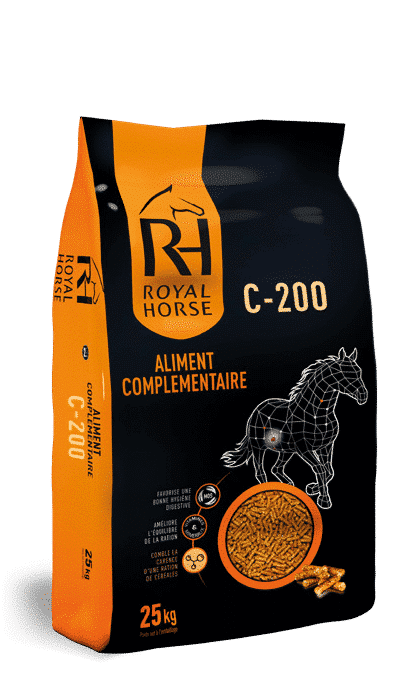An increasing number of non-reasoned, non-mineral supplemented grain mixtures are available on the market. They are very attractive because they are inexpensive and appeal to owners who think they are doing the right thing. However, horses are not backyard chickens, they are members of the herbivore family and have a limited ability to digest starch sources, which can have negative effects on the digestive health of horses.
SURPLUS GRAIN
Attractive but low quality grain mixes
These mixtures have no resemblance to reasoned flaked foods, despite frequent comparisons with the latter. They are often composed of flattened cereals (raw) and not flaked (cooked) and their shelf life is limited to a few weeks because they are subject to fermentation and mold.
Just because a feed looks good doesn’t mean it’s a balanced feed specifically designed for horses.

These mixtures are often combinations of raw materials consisting of oats, barley, corn, but also bran pellets (light colored, easily identifiable), and alfalfa plugs (recognizable, dark green).
They have nothing in common with our mixed offers of cereal flakes and pellets where the pellets have been specially formulated to complement the flaked cereal part which allows us to dose the level of starch and above all to have a stable food (by compensating the fluctuations of the values of cereals and other raw materials) all year round.
The risk of a ration too rich in starch is the acidification of the stomach contents. “Fermentable starch” in the digestible tract
We can distinguish 3 stages:
In the stomach there are bacteria that transform part of the starch into organic acid such as lactic acid which can maintain the presence of ulcers on the non-glandular part of the stomach.
In the small intestine, it is here that starch is transformed into glucose molecules that allow the synthesis of glycogen
This glycogen will then serve as a source of energy during the effort. Indeed, stored in the liver or the muscle, it is transformed into glucose which is transported in the blood to supply the body with energy during the effort.
It is in the large intestine that the secondary starch not digested during the two previous stages is found and the same reaction as in the stomach will occur:
- Fermentation and production of lactic acid.
- Decrease of the Ph (acidity) in the cecum.
- Decrease of the digestibility of fibers by destruction of the cellulolitic flora so important for horses.
Can I add cereal to my food?
It is not recommended to add grain to a balanced feed that was designed to be fed alone with hay. The addition of raw grain will “dilute” the concentration of minerals, vitamins and amino acids in the feed.
If you absolutely want to have a cereal part in your horse’s ration, choose flaked cereals and turn to a complementary cereal and forage feed such as the C200 specially designed for this purpose.




